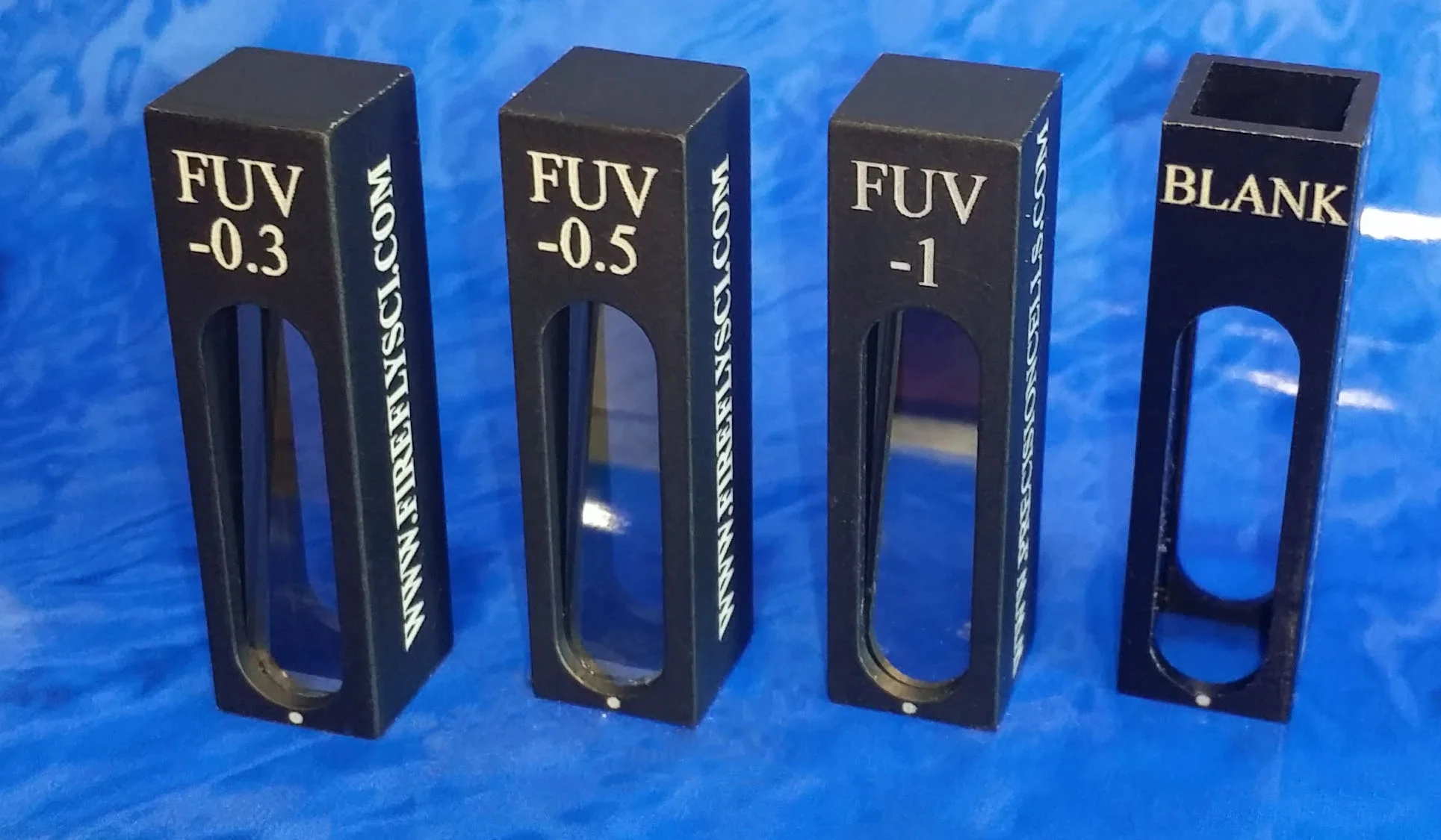How to Handle & Care for Spectrophotometer Calibration Standards
/Liquid filter on the left and a Solid-State filter on the right
Do you have a set of spectrophotometer calibration standards in your lab? If the answer is yes, the next few paragraphs will help save you tons of headaches and additional fees that arise from mishandling your calibration standards.
First, we’ll explain what can happen when standards are not handled properly:
- Incorrect readings – what is the point of having a NIST-traceable standard that doesn’t work? Smudges and scratches can damage readings and when this happens our standards don't even make good paperweights!
- Breakage – Standards that are cracked or chipped are not able to be repaired so, if you’re not careful, you can throw that $1,000 right in the trash.
- Leakage (liquid standards only) – Liquid spectrophotometer calibration filters consist of many different chemicals. Some of them are very hazardous, such as potassium dichromate or toluene in hexane. You definitely don’t want these things breaking and leaking all over your lab.
Solid-State vs. Liquid Spectrophotometer Calibration Standards
The procedures for handling and cleaning solid-state and liquid filters are quite different. In this guide, we will go over the care and maintenance of both types of calibration filters. Let’s start with the solid-state filters:
How to Handle Solid-State Calibration Standards
Proper way to handle UV Calibration Filter
First off, always wear powder-free gloves when handling solid-state calibration. Fingerprints are the number one offender for incorrect readings. Always pick up the standard by the sides. A user should never touch the optical surfaces even when wearing gloves.
Since solid-state filters are constructed with a metal housing, they have higher durability if they are accidentally dropped. This is not to say there are no consequences to dropping a solid-state filter but compared to a liquid filter they are far more durable.
When inserting a filter into the spectrophotometer be sure to insert the spectrophotometer calibration filter straight down into the cuvette holder. Also, when removing the filter make sure to pull straight up. Any torque can crack the neutral density glass rendering the filter unusable.
They may be shiny, but please no touching
How to Clean Solid-State Calibration Filters
Pay no attention to the name on the can
We do not recommend that you try to clean a solid calibration standard on your own. We all love to use micro-fiber cloths to clean glasses, laptop screens or smartphones however, our results have shown that these types of cloths cause smudges and scratches to the optical glass. It’s the same with lens tissues. Do not ever use them for cleaning a solid-state NIST calibration filter.
So what can I use for cleaning my filter? The only safe way to clean a solid calibration filter is with dust-free compressed air. Simply lay the filter on a clean surface with the optical side facing up and give it a shot or two with the compressed air. Note: only use dust-free air in a can. Some compressor lines have dust in them and they can damage the optical surfaces.
How to Handle Liquid Calibration Standards
Proper way to pick up liquid standard
The handling procedure for liquid calibration standards is very similar to their solid-state siblings. A big difference between the two is that liquid standards are housed in a UV Quartz cuvette which means if you drop it, then the filter is effectively kaput (which is the proper technical term). On top of this, you’ll have to clean up the spill which contains hazardous materials. It will be a general headache in the best case scenario. The utmost in care must be exercised when using liquid calibration standards. Never leave a filter on the lab table if it is not being used. Please see the Storing section below.
Just to review, a liquid filter should be inserted straight down into your spectrophotometer and pulled straight out for removal.
A liquid filter has to be picked up near the top of the filter and by the two frosted sides of the cuvette. Some filters have a cap, in which case, the filter will need to be held by the cap. Powder free gloves must be worn when handling liquid filters.
How to Clean Liquid Calibration Standards
Liquid filters are a snap to clean. Since they are made with a UV Quartz cuvette you can take a dust-free microfiber cloth and give the outside a good cleaning. If there are tough stains on the outside they can be removed by adding a drop of isopropyl alcohol to the lens tissue or micro-fiber cloth. A dust-free compressed can of air will also do the trick for any type of dust removal.
Storing of Liquid & Solid-State Spectrophotometer Calibration Standards (Both liquid and solid-state standards)
- Always keep spectrophotometer calibration standards in their protective case when not in use.
- Store liquid calibration filters at room temperature. These filters can freeze if stored in a place that is below freezing.
- Always use extreme caution when working with NIST calibration standards.
Conclusion
We all know and understand the importance of using calibration standards to validate our spectrophotometers. By following the procedures outlined above it will prolong the life of your calibration standards. If you are using FireflySci’s solid-state filters and you follow the guidelines above, you’ll never need to send the filter in for recalibration or cleaning.
If you have any questions please contact us.
Here’s to Your Success!
The FireflySci Team
![firefly_logo_FINAL [Black].jpg](https://images.squarespace-cdn.com/content/v1/5411d5c0e4b02e1c8b27565a/1434491508803-XB4OF7YDY46Z72L5U5AP/firefly_logo_FINAL+%5BBlack%5D.jpg)














